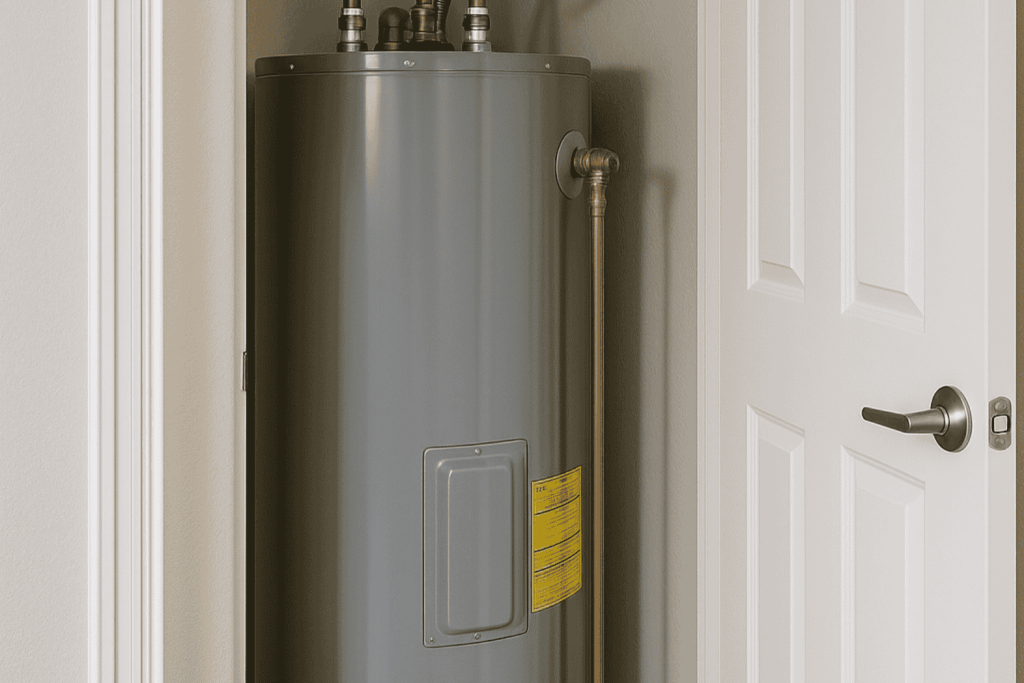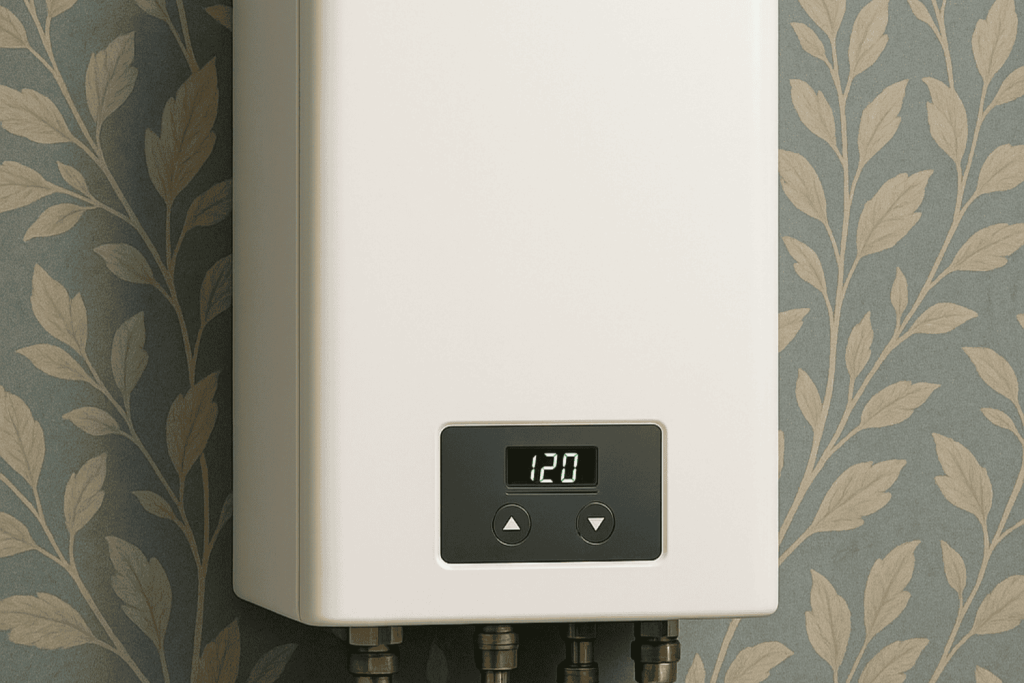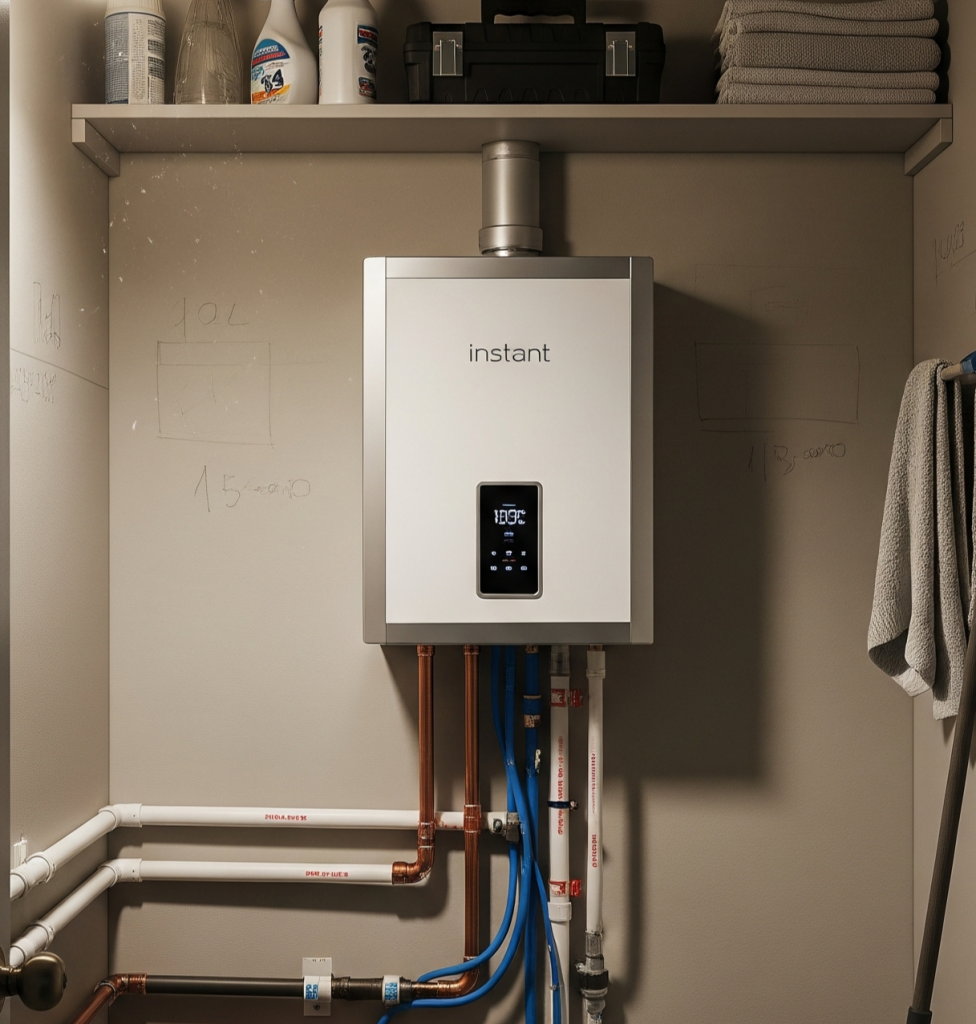How Long Do Water Heaters Take To Heat Up?
Waiting for hot water can feel like forever, especially when you’re running late or trying to squeeze in a quick shower before work, but how long should it actually take for your water heater to do its job?
At House Plumbing, we’ve worked on hundreds of traditional and tankless water heaters over the years, so we know what’s normal and what can point to a bigger issue. Whether you’re noticing longer wait times or are just curious about how your system stacks up, understanding the average heating time is the first step to better performance and comfort.
The time it takes for a water heater to heat up depends on several factors, including the type of unit, tank size, energy source, and even the season. Knowing what affects this time can help you spot inefficiencies, avoid unnecessary delays, and recognize when it might be time for an upgrade. In this guide, you’ll learn:
- Typical heating times for gas, electric, tankless, hybrid, and solar units
- Key factors that influence the time for water heater to heat up
- How long tankless water heaters take to heat up and what makes them different
- Signs your water heater may be underperforming or in need of maintenance
- How to tell when it’s time to get a new water heater
By the end of this article, you’ll know exactly how long hot water heaters take to heat up, why your system might be taking longer than expected, and what steps you can take to improve performance or plan for a replacement.
How Long Water Heaters Typically Take To Heat Up
The time it takes for a water heater to heat up depends heavily on the type of system you have. At House Plumbing, we’ve handled everything from older 80-gallon electric tanks to high-efficiency tankless units. Knowing the typical heating times can help you set realistic expectations and recognize when your system is falling short.
Gas Storage Tank Water Heaters
Gas-powered storage water heaters are some of the fastest when it comes to heating water. Their high BTU (British Thermal Unit) output allows them to heat a full tank relatively quickly.
A standard 40- to 80-gallon gas water heater typically takes about 20 to 40 minutes to fully heat from a cold start. This makes them a popular choice for larger households that need quick recovery after heavy usage.
Electric Storage Tank Water Heaters
Electric water heaters take longer to heat water due to their lower energy output. A 40-gallon electric model can take 60 to 120 minutes to reach the desired temperature. Larger tanks, such as 60 or 80 gallons, will take even longer. The slower heating is due to the electric heating elements, which can’t match the rapid thermal output of gas burners.
Tankless Water Heaters
Tankless water heaters, often referred to as on-demand systems, heat water as it flows through the unit. This means there’s no storage tank to heat in advance. While the heating itself happens almost instantly, it usually takes 1 to 3 seconds for the water to reach the faucet due to pipe travel.
These systems are ideal for continuous hot water and eliminate the wait between uses, though they must be properly sized to meet household demand.
Hybrid and Solar Water Heaters
Hybrid water heaters, which combine heat pump technology with electric elements, are more energy efficient but slower to heat. On average, they take 60 to 80 minutes to heat a full tank. Solar water heaters vary much more, depending on sunlight availability. Most solar systems include a gas or electric backup to ensure hot water is available even during cloudy days.
Key Factors That Affect Heating Time
Understanding the factors that influence the time for a water heater to heat up can help you diagnose problems or make better decisions when buying or upgrading a system.
Tank Size and First-Hour Rating
Larger tanks naturally take longer to heat because there’s more water to bring up to temperature. The first-hour rating tells you how much hot water the heater can deliver in an hour, starting with a full tank. A low first-hour rating means slower recovery time, which can be a problem during back-to-back showers or laundry runs.
- 20-gallon tank: Heats in 20–30 minutes (gas), 45–60 minutes (electric)
- 40-gallon tank: Heats in 20–40 minutes (gas), 60–120 minutes (electric)
- 80-gallon tank: Heats in 60+ minutes (gas), 90–150 minutes (electric)
Energy Source (Gas vs. Electric)
Gas water heaters heat faster due to their higher BTU output, making them more suitable for homes with high hot water usage. Electric models are generally cheaper to install and maintain but take longer to heat water and recover after use.
Incoming Water Temperature
The colder the water coming into your heater, the longer it will take to reach the set temperature. This is especially noticeable in winter, when incoming water can drop to 50°F or lower. Heating water from 50°F to 120°F takes significantly more energy than heating it from 70°F.
Thermostat Setting and Desired Temp
Most water heaters are set between 120°F and 140°F. Setting the thermostat higher increases heating time and energy usage. While 140°F can help reduce bacteria growth, 120°F is typically sufficient for most households and is safer for children and the elderly.
Efficiency and Maintenance Condition
Over time, sediment builds up inside the tank, especially in areas with hard water. This layer of minerals insulates the water from the heating element or burner, slowing down the process. Regular maintenance, including flushing the tank and checking heating elements or burners, can keep your system running efficiently.

How Long Do Tankless Water Heaters Take To Heat Up?
Many people assume tankless water heaters provide “instant” hot water, but there’s a small delay. The heating process begins as soon as you turn on the faucet, but the hot water still has to travel through your plumbing system.
Activation Delay and Pipe Travel Time
Tankless units activate when they detect water flow. From there, it takes 1 to 3 seconds to heat the water, plus additional time for it to travel through pipes. If the faucet is far from the heater or the pipes are long, it might take 10–15 seconds before hot water arrives.
Flow Rate and System Size
The flow rate, measured in gallons per minute (GPM), affects how well a tankless heater can keep up with demand. If multiple fixtures are running at once, the system may struggle to maintain consistent temperatures unless it’s properly sized for your home.
Maintenance Considerations
Tankless systems also require maintenance. Mineral buildup inside the heating coils can reduce efficiency and increase heating time. Descaling the unit at least once a year helps maintain performance and extends the lifespan of the system.
What if Your Water Heater Is Too Slow?
When hot water takes longer than usual to arrive or never gets quite hot enough, it may not just be a matter of patience. These are common signs your water heater isn’t performing as it should.
Signs of Underperformance
- Water takes longer than usual to heat
- Lukewarm water even when the tap is set to hot
- Fluctuating temperatures during use
- Unusual noises coming from the tank
Common Causes
- Sediment buildup inside the tank
- Faulty thermostat providing inaccurate temperature readings
- Failing heating element or burner
- Old age leading to overall wear and inefficiency
When Is It Time To Get a New Water Heater?
If your water heater is 10 to 15 years old, struggles to meet your hot water needs, or requires frequent repairs, it may be cost-effective to replace it. Newer models are more efficient, heat faster, and can save you money on utility bills over time.
House Plumbing’s Heating Time Checklist
At House Plumbing, we’ve inspected and repaired hundreds of water heaters. We know what signs to look for and how to get your system back in shape.
What We Look for During Inspection
- Tank condition and signs of corrosion
- Burner or heating element performance
- Thermostat accuracy and calibration
- Sediment levels and water quality issues
- First-hour rating compared to household demand
How We Help Homeowners Save Time and Money
- Recommend properly sized units for your household
- Perform regular maintenance to prevent costly issues
- Offer upgrades to faster, more efficient systems
- Help you decide when it’s time for a replacement based on age, performance, and energy use
Know What To Expect From Your Water Heater
Understanding how long your water heater should take to heat up isn’t just about convenience. It helps you monitor system health and spot warning signs early. Whether you have a traditional tank system or a tankless unit, here’s a quick recap:
- Gas water heaters heat up in 20–40 minutes
- Electric models take 1–2 hours, depending on size
- Tankless heaters deliver hot water within seconds
- Heating time is influenced by tank size, energy source, incoming water temperature, and maintenance
- If your system is slow or inconsistent, it may be time to consider a replacement
If your water heater isn’t performing like it used to, contact House Plumbing. We’ve seen every type of system and can help restore your hot water quickly and efficiently.







